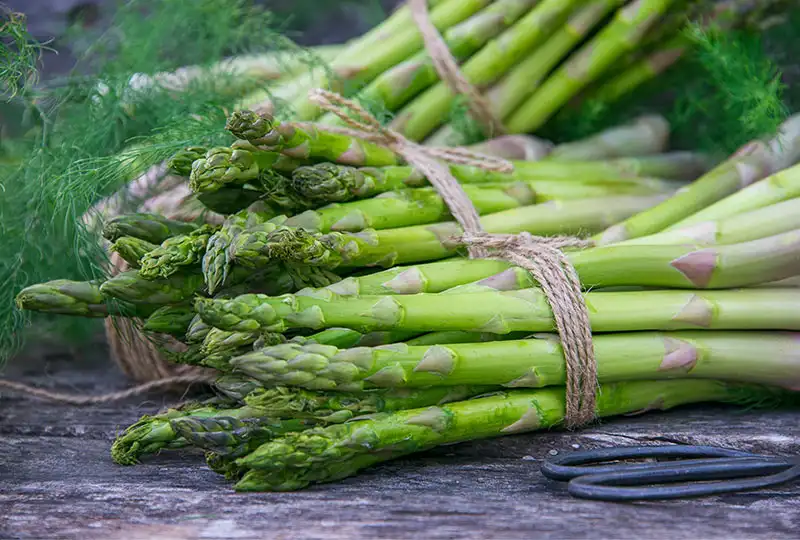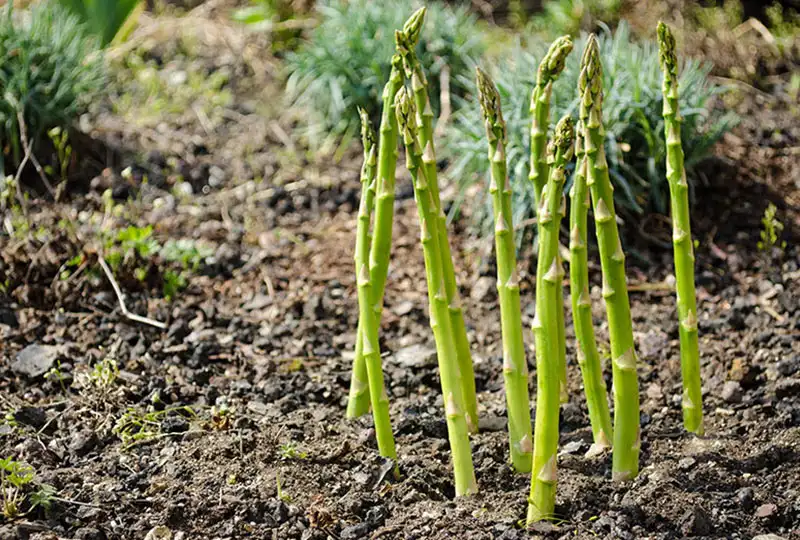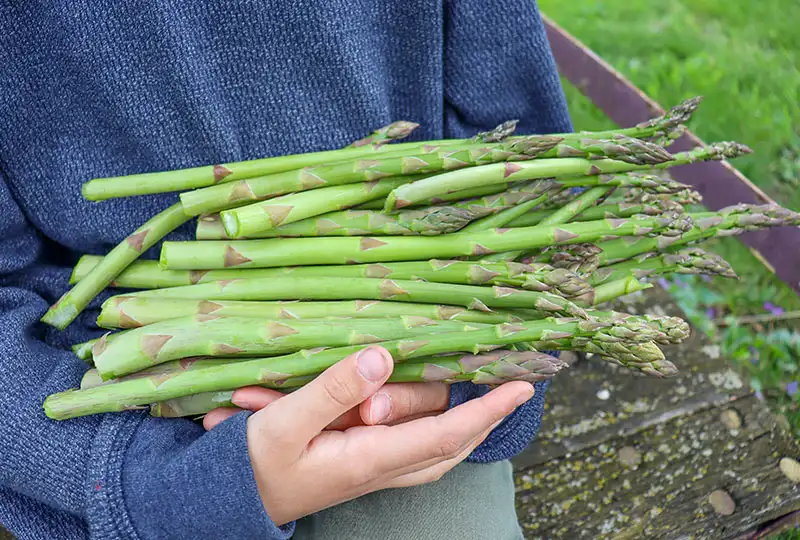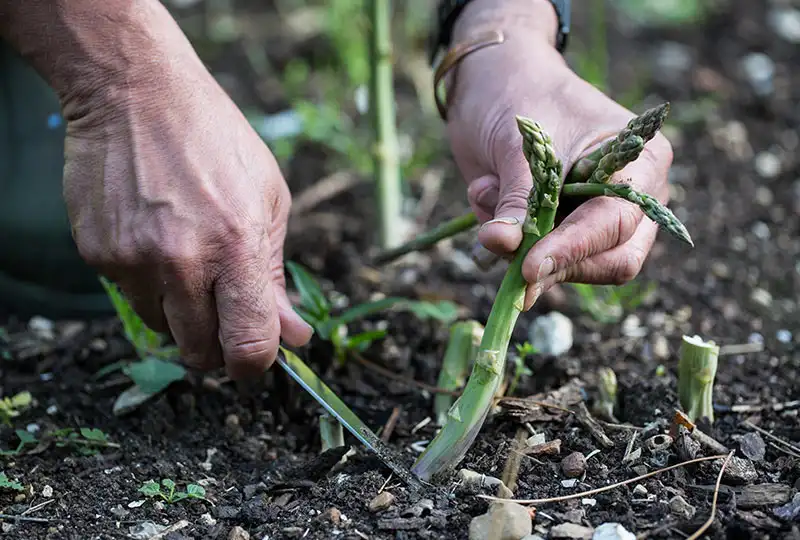How to Grow and Care for Asparagus

Asparagus is one of the few perennial vegetables, capable of producing annual spring harvests for up to 20 years. It's packed with flavor and rich in antioxidants, helping to protect against various health conditions. Asparagus can be cooked in various ways: and offers a versatile addition to any meal.
How to Plant Asparagus

Asparagus can be grown from seeds or crowns, but most gardeners prefer starting with one-year-old crowns due to their quicker establishment. Here's a guide to planting asparagus:
1. Site Selection:
Choose a sunny location where asparagus can thrive for up to 20 years. The plants need 6-8 hours of direct sunlight daily. While they can tolerate some shade, they produce best in full sun. Asparagus grows well in well-drained, sandy soil with a pH of 6.5-7. Avoid areas with standing water, as the roots are susceptible to rot.
2. Soil Preparation:
If you have clay soil, improve drainage by amending it with compost or aged manure. Prepare your planting site in the fall for spring planting. Dig an 18-inch trench and fill it with 6 inches of compost followed by 6 inches of topsoil.
3. Planting Crowns:
Soak crowns in water for 20-30 minutes before planting. Lay them in the trench and cover them with 2 inches of soil. As the spears emerge and reach 3 inches tall, add more soil until the trench is filled. Alternatively, you can fill the trench completely after planting if the soil is sandy and loose.
4. Planting from Seeds:
To grow asparagus from seeds, start them indoors or sow them directly in the garden in spring. Plant seeds 1 inch deep and 2-3 inches apart in rows 12-18 inches apart. Seed germination can take up to three weeks, so patience is key. Learn more about seed starting from our seed starting guide here.
Growing Asparagus

1. Fertilization:
Asparagus benefits from regular fertilization. Use a balanced fertilizer specific to asparagus, applying 3-5 pounds per 100 square feet each spring before growth starts. Repeat the application after the first harvest is complete. We recommend our Asparagus Alive! Fertilizer to give your asparagus the nutrition it needs.
2. Mulching and Weed Control:
Keep the asparagus bed free of weeds with a light mulch layer, which helps conserve moisture. Mulching in late fall helps stabilize soil temperatures and prevents deep freezing.
3. Care in Winter:
Cut back the tops in early winter once the plants turn yellow and add mulch to protect against sudden soil temperature changes. Removing old foliage also helps control asparagus beetles.
Harvesting Asparagus

1. Harvest Timing:
Asparagus is ready for harvest when spears are 6-10 inches tall. Limit harvesting during the second year to one or two cuttings, allowing the plants to mature. A full crop can be harvested from the third year onward. Harvest spears for 6-8 weeks, usually until early July in northern regions.
2. Harvesting Method:
Snap or cut spears at ground level to avoid injuring emerging shoots. Harvest before the flower buds at the spear tips open, as taller spears become woody and less tender.
Asparagus Care and Maintenance

Asparagus grows best in hardiness zones 3-8, which include a winter freeze or dry season. Common pests include asparagus beetles, which can damage spears and shoots. Control methods include hand-picking beetles, using beneficial insects, or applying organic insect control. Keeping plants healthy with proper feeding, weeding, and mulching can prevent diseases like rust and fusarium wilt. Consider companion gardening with other crops like strawberries, tomatoes and parsley to deter pests and improve overall garden health.
Growing asparagus requires patience but rewards gardeners with a long-lasting harvest year after year. By selecting a good site, planting properly, and caring for the plants during their early years, you can enjoy delicious, homegrown asparagus for many seasons.





 Gardens Alive! & Supplies
Gardens Alive! & Supplies






